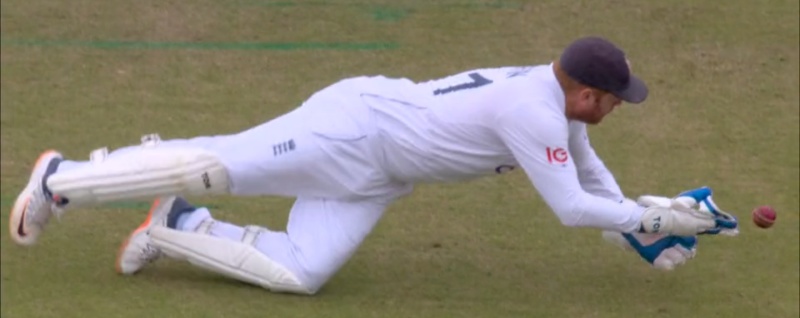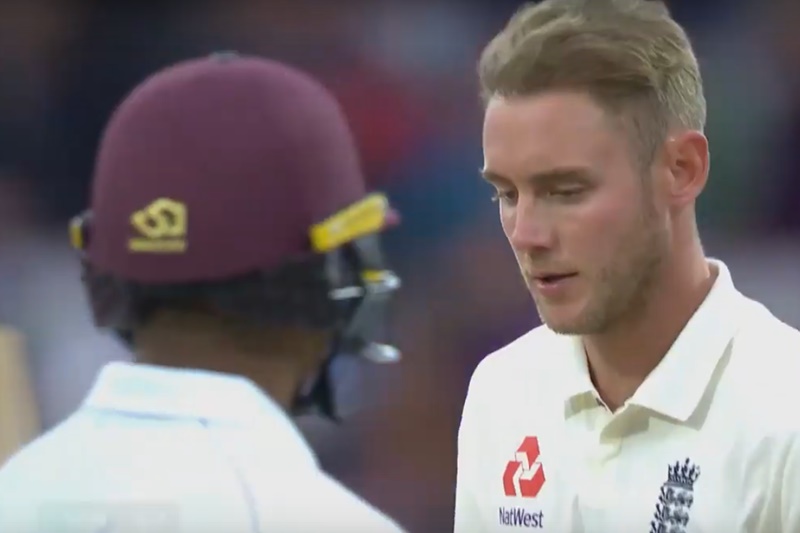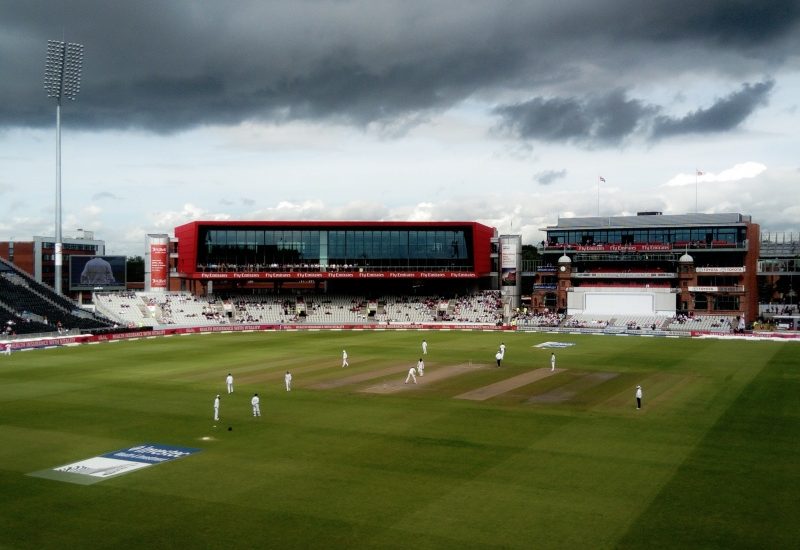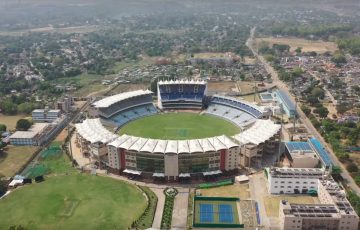England and Australia have arrived in Manchester for the last northern Ashes Test until 2031. The tourists lead 2-1, but fatigue is starting to tell for both teams. What can we expect in the week ahead?
Pat Cummins has bowled 140 overs in the last six weeks, and may conceivably have sat this match out had his team taken the Headingley Test and therefore the series.
37-year-old Stuart Broad, meanwhile, has bowled 149 overs since the start of June. Other than those two, the only other seam bowler to have played in all three Ashes Tests is Ollie Robinson. He sat out the Ireland Test, but he’s got through 102 overs since then. It looks like his back may not allow him to add to that tally.
But it’s not just the quick bowlers who are suffering. Ben Stokes’ body is basically being held together by an ever-expanding exoskeleton of orthopaedic braces and bandages, while questions remain about Jonny Bairstow’s mobility behind the stumps.

“Questions remain” is the diplomatic way of putting it. Bairstow has looked like a man coming back from breaking his leg in three places and also dislocating his ankle. He’s actually moving quite well considering exactly that happened less than a year ago, but it’s fair to say he hasn’t looked the keeper he was. Maybe he’ll have loosened up a bit after a week off.
The batters from both sides are basically fine because they’re only batters and therefore don’t really do anything.
So onto conditions. We thought the smart thing to do would be to ask Private First Class William Hudson of the United States Colonial Marine Corps for his take on how the Old Trafford pitch might play this week.
Private Hudson says…
Hey, maybe you haven’t been keeping up on current events, but Australia just got their asses kicked. That doesn’t make England a squad of ultimate badasses though. They’re still 2-1 down. It’s a must-win game for them, so what can we expect from the Old Trafford pitch?
We’re entering North-West England’s rainy season now, but Old Trafford pitches do tend to be hard and fast at this time of year after being sun-scorched throughout May and June. This year was hot as hell – and it was a dry heat too.
The thinking has therefore always been that Old Trafford is the UK pitch that most favours faster bowlers and spinners. Does that hold up though in recent times? Let’s take a look at the last few Test matches played here.
Last year England famously beat South Africa by an innings after losing the first match of that series at Lord’s.
In South Africa’s first innings, all 10 wickets were either edges or LBWs and nine were taken by fast-medium bowlers. The good length ball was king and England also lost three wickets to such deliveries before the end of day one.
However, after the first hour of day two, the game changed. Bens Stokes and Foakes put on 173 off 324 balls. The question after that was whether England’s first innings bowling method would work again. It did. South Africa were bowled out for 179, all 10 wickets falling to fast-medium bowlers, nine of them to length balls.
It’s perhaps also worth highlighting that despite the low score, South Africa did reach the second new ball in this innings. They then lost their last five wickets to it in barely five overs. That shiny new nut isn’t to be wasted, people.
Going further back, it’s a bit harder to draw firm conclusions from 2020 as three Tests were played at the ground in not much more than three weeks. The stats say that Stuart Broad (22 wickets at 12.09) and Chris Woakes (15 wickets at 15.80) were the most successful bowlers and Ben Stokes also chipped in with five at 14.00. It’s therefore something of a surprise to see that James Anderson only took three at 47.66 – albeit he only played two of the matches.

So on the face of it, it’s a similar story. Jofra Archer’s five wickets at 36.40 seems a fairly nondescript return for a faster bowler, while Dom Bess’s five wickets at 48.00 is significantly worse. But then the touring spinners did actually fare pretty well. Roston Chase took eight wickets at 33.62 for the West Indies across two Tests, while Yasir Shah took eight wickets at 20.62 for Pakistan in their one Test.
The match before that was the fourth Test in the 2019 Ashes, which Australia won by 185 runs. Pat Cummins, Mitchell Starc and Josh Hazlewood were their seamers. Nathan Lyon contributed just two wickets, both in the second innings: Joe Denly for a dentury and then Archer.
Again, the wickets taken by both teams were overwhelmingly bowleds, LBWs or catches by the keeper and in the cordon. One noteworthy exception was Steve Smith who was caught at backward point from a reverse sweep for 211.
All in all, I’d have to say that close catching is likely to be vital this week. You simply do not want to be shelling any nicks. If chances start going down, that’s it, man… Game over, man. Game over.
Don’t suppose you’d like to help support the site for a month (or two) would you? You can chip in via our Patreon campaign. The minimum’s a quid for a month, but we wouldn’t become uncontrollably enraged if you chose to contribute more or the same amount for longer.
The lead image up top is by Mark Stuckey via Unsplash.







Thanks for sharing your Private thoughts ahead of the Old Trafford test, KC.
Local weather forecasts – especially rain radar readings/projections – might come in handy this week. Is that within the remit of a Private First Class such as Hudson or do we need a Commissioned Officer / Regular Contributor to supply those?
It’s currently looking OK in Salford (about 2 miles from the ground, as the rented helicopter flies) but there’s been a bit of rain.
Met Office and BBC forecasts round these parts have been wildly divergent recently, as I type this the BBC forecast for today features quite a lot of ‘Thundery Showers’ icons , particularly for the morning session whereas the Met Office doesn’t show any point with more than a 10% of precipitation.
One guarantee is that there will be uncertainty about the weather on Friday, when I am due to be there. After a full day’s play when I attended Headingley, my luck is surely going to to run out.
Cheers APW. Here’s hoping that you get a super day’s play on Friday, for your sake and also my own. While I won’t be at the ground that day (lucky you), it is a day when I should be able to follow much of the action from home.
Saturday is the one projected to be a potential washout. The rest, as you say, depends on which weather app you choose. I like the more optimistic ones. BBC is relentlessly pessimistic on weather these days, ever since Michael Fish failed to predict a storm in 1987.
We’re taking the position that Saturday’s forecast has already hit rock bottom and now can only improve.
Yeh, Saturday doesn’t look too great – 80% “chance of precipitation”, according to the Met Office.
That made me wonder, though, about what exactly they mean by “chance of precipitation”. So I clicked their little info icon thingy:
So there you have it. 80% is the chance that the precipitation (rain, sleet, snow, hail and/or drizzle) will fall FROM THE SKY. There is only a 20% chance that the precipitation (rain, sleet, snow, hail and/or drizzle) will fall from the roof, from the ground, from overexuberance, or from sheer bloody-mindedness. So no need to take your downbrellas on Saturday.
Putting together an Aliens XI but only have three bolwers so far.
Ian Bishop the robot (RF)
Gubby Alien (RF)
Ellen ‘gives the ball a good rip’-ley (OB)
Andrew “Private” Hudson,
James Cameron Bancroft,
James Cameron Green,
Corporal Graeme Hicks,
Private Vasbert Drake…
Heather “they come at” Knight, mostly